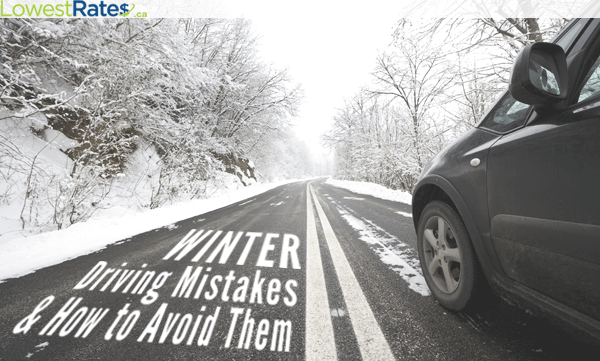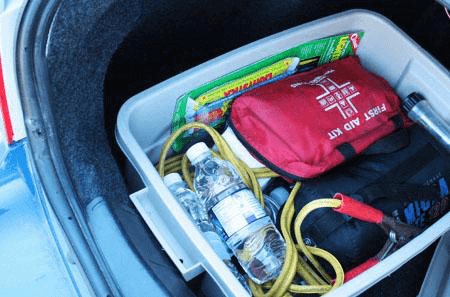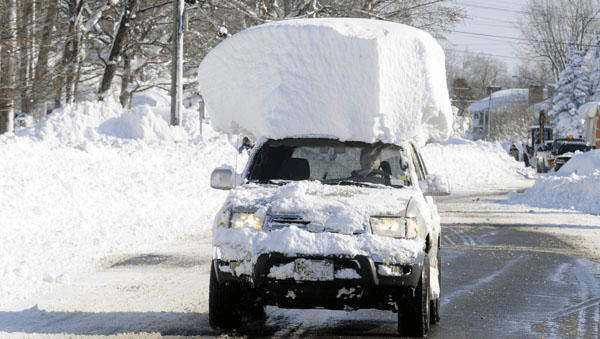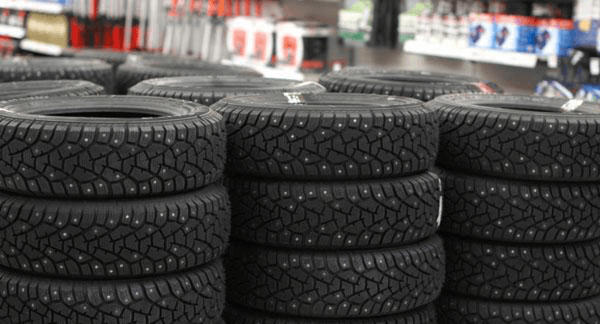8 Winter Driving Mistakes – And How to Avoid Them!
By: Lucy Zemljic on December 10, 2014
Some love it, some hate it, but the holidays in Canada just wouldn't be the same without it. I'm talking about snow – nature's winter décor. It's so pretty on rooftops, tree branches and Christmas cards, but a few inches on the road? Instant commuter chaos.
Because where there's snow, there's slush, sleet, and slippery streets – and unfortunately, that leads to accidents. According to Aviva Canada, auto insurance claims increase almost 50% during the winter months, and some drivers just don't realize the winter driving mistakes they're making. While we can't stop the snow from falling, we can try our best to stay safe on the road – read on to check out our top eight winter driving don'ts and what you can do to avoid them.
1. Not checking the forecast.
Checking the weather seems like a total no-brainer – just take a look out the window! – but it can be all too easy to forget to consider the forecast before heading out on the road.
Before getting behind the wheel, take a look at your local weather forecast, either on TV, online at theweathernetwork.com, or on your smartphone. To avoid getting stuck in unforeseen winter gridlock, check traffic reports and give yourself plenty of time to get to your destination. Winter driving conditions mean slower traffic, more delays, and possible road closures. In the car, tune into traffic reports so you can plan an alternate route if the need arises.
2. Forgoing the winter driving kit.
Too many drivers dismiss the idea of a full-on winter driving kit, but the right safety provisions can be crucial in case of an emergency. It's a good idea to keep a safety kit in your car all year, but in wintertime, you'll need a few more items to fully equip your ride.
The CAA recommends drivers keep the following items in their trunk:
- an ice scraper and brush
- a flashlight
- a first aid kit
- blankets
- a small shovel
- a bag of salt, sand or kitty litter
- traction mats
- a tow chain
- a compass
- road maps
- a cloth or roll of paper towels
- warning lights or road flares
- extra warm clothing and footwear
- water bottles and emergency food, like snack bars
- booster cables
- matches and an emergency "survival" candle (the kind that comes in a can)
- a fire extinguisher
- extra windshield washer fluid
- fuel line antifreeze
- a reflective vest

Now that's a prepared driver.
3. Driving too fast.
Of all these driving faux pas, going way too fast for winter is probably the one most seen on snowy streets. Those speed limits are for ideal driving conditions – snow, reduced visibility, and slippery roads mean that you just have to slow down.
You might be thinking, "but I've got four-wheel drive!" Although four-wheel or all-wheel drive is usually better at handling winter weather, and can give your car extra traction to get through snowy roads, it won't help you stop any quicker. Even with four-wheel drive, you can easily slide off the road or lose control when things get slippery.
4. Not clearing the snow and ice off your car.
You've probably seen it before. You know, that one car rolling along after the season's first snowfall, looking more like an igloo on wheels than an automobile.
Don't be that driver – take some time to brush the snow off your roof, and scrape all the ice off your windows. Take a few extra minutes to make sure your entire windshield is clear, as well as your rear and side windows – it's not safe to drive around with only a small patch to look through. It's also unsafe to cruise down the street with snow on your roof, as it could easily slide down your windshield as you drive and obstruct your view. In fact, a snow-covered windshield can land you a fine of $85-$300, and a snow-obstructed license plate can set you back $30-$85.

A perfect example of what not to do.
5. Panicking when you start to skid.
One of the most dangerous hazards for winter drivers is icy roads, especially that ominous black ice. “Black ice” isn't actually black, it's invisible, and can make tricky driving conditions downright dangerous. If you find yourself sliding on some black ice, don't panic.
Stay calm and take your foot off the gas pedal, then focus on the direction where you want your car to go – not where it might be taking you – and steer in that direction. If you're skidding in a straight line, step on the clutch pedal or shift into neutral. Whatever you do, don't accelerate, and don't slam on the breaks either, tap the breaks lightly instead.
Remember, pavement looks grey in winter, but black ice will make the road look shiny, like new asphalt. Watch the cars in front of you to see if they're sliding, and be extra cautious when driving over an overpass or bridge.
6. Tailgating.
Tailgating is not a winter driving phenomenon – some drivers just insist on following too closely, no matter the time of year. But in winter, this bad habit becomes even more dangerous, since it takes much longer to stop on an icy and snowy road than it does on a dry one. That gives you less time to react in case of an emergency, so make sure to keep a safe distance between your vehicle and the car in front of you. One way to do this is by using the two-second rule:
- Pick a marker on the road ahead of you, like a road sign.
- When the rear of the car in front of you passes the marker, count “one thousand and one, one thousand and two”.
- When the front of your own car reaches the marker, stop counting.
You should reach the marker after counting “one thousand and two,” otherwise you're following too closely. In wintertime, double this rule, and count to one thousand and four.
7. Not preparing your car for winter driving.
To make sure your vehicle is ready for the season ahead, keep your car in good repair and give it a complete checkup. Don't wait until the first snow to have those winter tires installed, either.
And yes, we know that opinions on winter tires are mixed – some drivers swear by them, some think they don't do much and are a waste of money – but we think it's better to be safe than sorry. Investing in winter tires is a small price to pay for a little more safety and peace of mind on those wintry Canadian roads.

Winter tires are designed to give you better traction on snow and ice.
8. Not preparing yourself for the winter drive.
As for preparing yourself, the usual applies – never drive when you're fatigued, or have been drinking, and always wear your seatbelt. Wear comfortable, warm clothes that don’t restrict movement, and warm up your car before you start driving, but never in a closed garage.
Remember – the safest winter driving strategy is to stay off the road. There's nothing wrong with waiting until the storm (or blizzard!) passes. If you have to get behind the wheel, follow these guidelines to stay safe. Best of luck out there!
Comments
 (1)_0.jpg?itok=0ZOZgBUi)
_0.jpg?itok=AxI1CKvJ)
.jpg?itok=5XcXLj95)